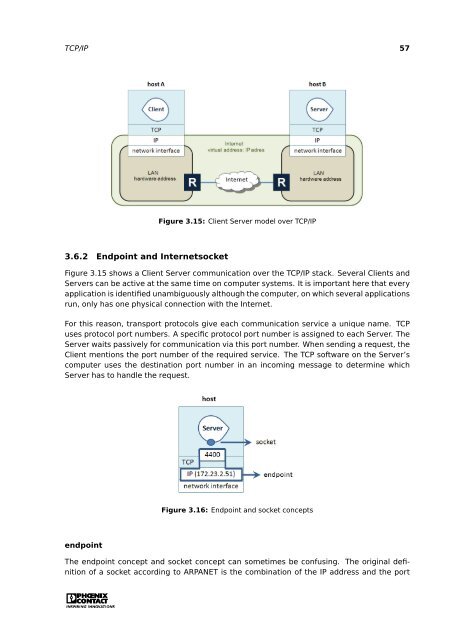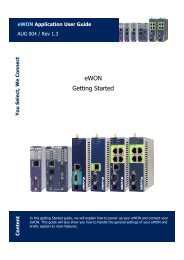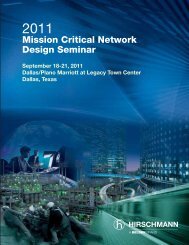Click to download Ethernet Basics manual - Grant Industrial Controls
Click to download Ethernet Basics manual - Grant Industrial Controls
Click to download Ethernet Basics manual - Grant Industrial Controls
Create successful ePaper yourself
Turn your PDF publications into a flip-book with our unique Google optimized e-Paper software.
TCP/IP 57<br />
Figure 3.15: Client Server model over TCP/IP<br />
3.6.2 Endpoint and Internetsocket<br />
Figure 3.15 shows a Client Server communication over the TCP/IP stack. Several Clients and<br />
Servers can be active at the same time on computer systems. It is important here that every<br />
application is identified unambiguously although the computer, on which several applications<br />
run, only has one physical connection with the Internet.<br />
For this reason, transport pro<strong>to</strong>cols give each communication service a unique name. TCP<br />
uses pro<strong>to</strong>col port numbers. A specific pro<strong>to</strong>col port number is assigned <strong>to</strong> each Server. The<br />
Server waits passively for communication via this port number. When sending a request, the<br />
Client mentions the port number of the required service. The TCP software on the Server’s<br />
computer uses the destination port number in an incoming message <strong>to</strong> determine which<br />
Server has <strong>to</strong> handle the request.<br />
Figure 3.16: Endpoint and socket concepts<br />
endpoint<br />
The endpoint concept and socket concept can sometimes be confusing. The original definition<br />
of a socket according <strong>to</strong> ARPANET is the combination of the IP address and the port




